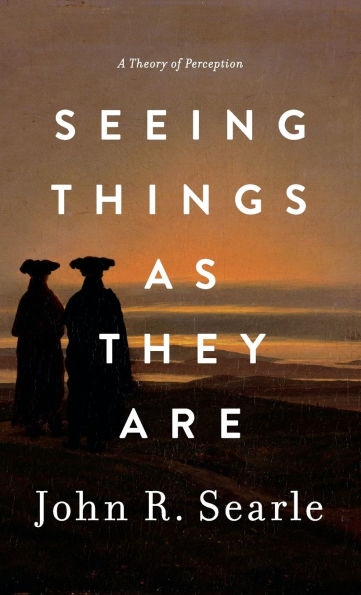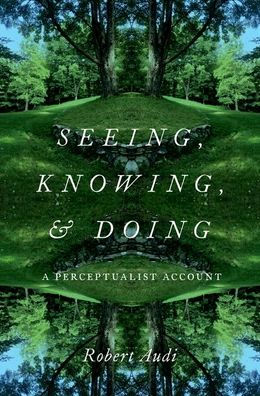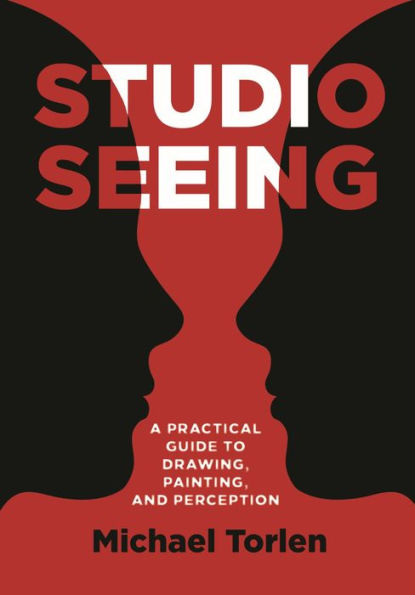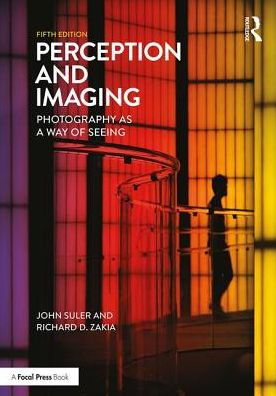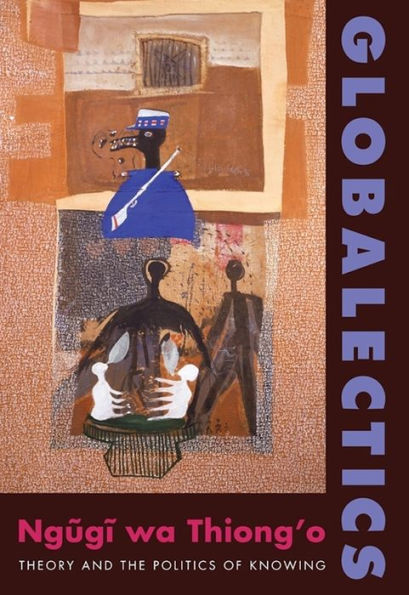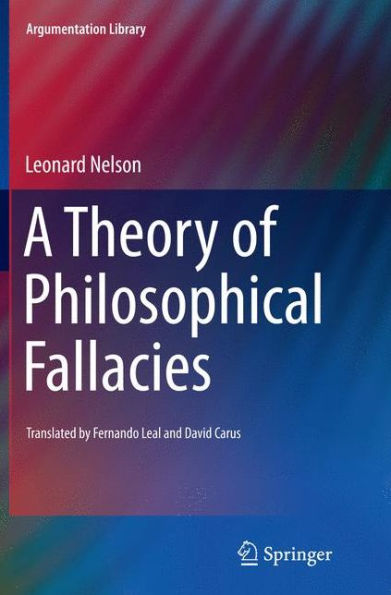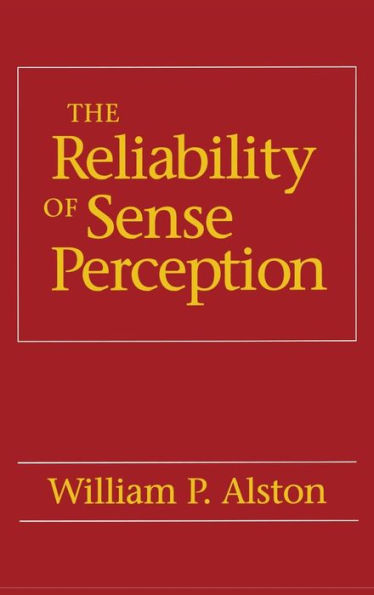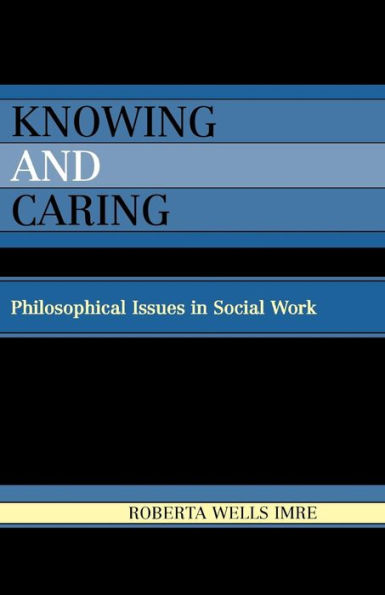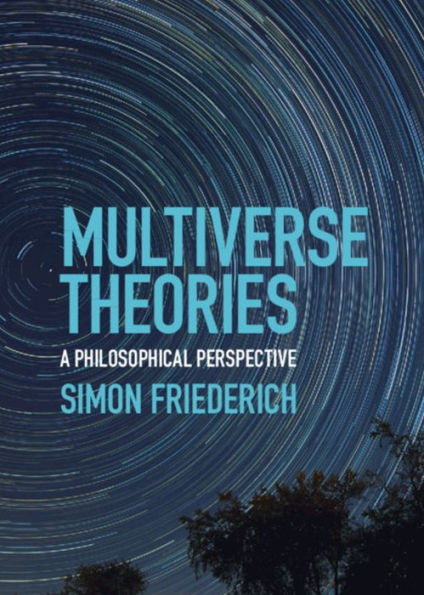Home
Seeing, Doing, and Knowing: A Philosophical Theory of Sense Perception
Barnes and Noble
Loading Inventory...
Seeing, Doing, and Knowing: A Philosophical Theory of Sense Perception in Franklin, TN
Current price: $59.00
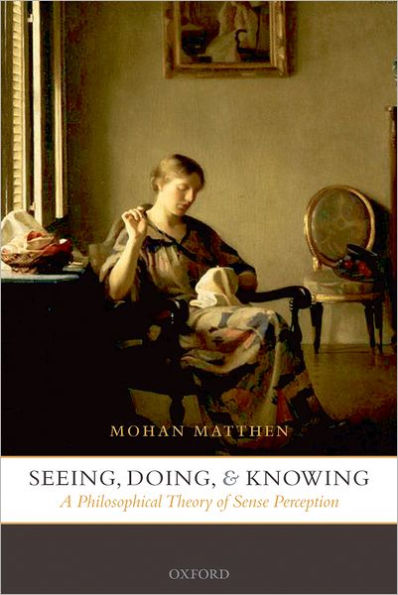
Barnes and Noble
Seeing, Doing, and Knowing: A Philosophical Theory of Sense Perception in Franklin, TN
Current price: $59.00
Loading Inventory...
Size: OS
Seeing, Doing, and Knowing
is an original and comprehensive philosophical treatment of sense perception as it is currently investigated by cognitive neuroscientists. Its central theme is the task-oriented specialization of sensory systems across the biological domain.
Sensory systems are automatic sorting machines; they engage in a process of classification. Human vision sorts and orders external objects in terms of a specialized, proprietary scheme of categories colors, shapes, speeds and directions of movement, etc. This "Sensory Classification Thesis" implies that sensation is not a naturally caused image from which an organism must infer the state of the world beyond; it is more like an internal communication, a signal concerning the state of the world issued by a sensory system, in accordance with internal conventions, for the use of an organism's other systems. This is why sensory states are both easily understood and persuasive.
Sensory classification schemes are purpose-built to serve the knowledge-gathering and pragmatic needs of particular types of organisms. They are specialized: a bee or a bird does not see exactly what a human does. The Sensory Classification Thesis helps clarify this specialization in perceptual content and supports a new form of realism about the deliverances of sensation: "Pluralistic Realism" is based on the idea that sensory systems coevolve with an organism's other systems; they are not simply molded to the external world.
The last part of the book deals with reference in vision. Cognitive scientists now believe that vision guides the limbs by means of a subsystem that links up with the objects of physical manipulation in ways that bypass sensory categories. In a novel extension of this theory, Matthen argues that "motion-guiding vision" is integrated with sensory classification in conscious vision. This accounts for the quasi-demonstrative form of visual states: "This particular object is red", and so on. He uses this idea to cast new light on the nature of perceptual objects, pictorial representation, and the visual representation of space.
is an original and comprehensive philosophical treatment of sense perception as it is currently investigated by cognitive neuroscientists. Its central theme is the task-oriented specialization of sensory systems across the biological domain.
Sensory systems are automatic sorting machines; they engage in a process of classification. Human vision sorts and orders external objects in terms of a specialized, proprietary scheme of categories colors, shapes, speeds and directions of movement, etc. This "Sensory Classification Thesis" implies that sensation is not a naturally caused image from which an organism must infer the state of the world beyond; it is more like an internal communication, a signal concerning the state of the world issued by a sensory system, in accordance with internal conventions, for the use of an organism's other systems. This is why sensory states are both easily understood and persuasive.
Sensory classification schemes are purpose-built to serve the knowledge-gathering and pragmatic needs of particular types of organisms. They are specialized: a bee or a bird does not see exactly what a human does. The Sensory Classification Thesis helps clarify this specialization in perceptual content and supports a new form of realism about the deliverances of sensation: "Pluralistic Realism" is based on the idea that sensory systems coevolve with an organism's other systems; they are not simply molded to the external world.
The last part of the book deals with reference in vision. Cognitive scientists now believe that vision guides the limbs by means of a subsystem that links up with the objects of physical manipulation in ways that bypass sensory categories. In a novel extension of this theory, Matthen argues that "motion-guiding vision" is integrated with sensory classification in conscious vision. This accounts for the quasi-demonstrative form of visual states: "This particular object is red", and so on. He uses this idea to cast new light on the nature of perceptual objects, pictorial representation, and the visual representation of space.
Seeing, Doing, and Knowing
is an original and comprehensive philosophical treatment of sense perception as it is currently investigated by cognitive neuroscientists. Its central theme is the task-oriented specialization of sensory systems across the biological domain.
Sensory systems are automatic sorting machines; they engage in a process of classification. Human vision sorts and orders external objects in terms of a specialized, proprietary scheme of categories colors, shapes, speeds and directions of movement, etc. This "Sensory Classification Thesis" implies that sensation is not a naturally caused image from which an organism must infer the state of the world beyond; it is more like an internal communication, a signal concerning the state of the world issued by a sensory system, in accordance with internal conventions, for the use of an organism's other systems. This is why sensory states are both easily understood and persuasive.
Sensory classification schemes are purpose-built to serve the knowledge-gathering and pragmatic needs of particular types of organisms. They are specialized: a bee or a bird does not see exactly what a human does. The Sensory Classification Thesis helps clarify this specialization in perceptual content and supports a new form of realism about the deliverances of sensation: "Pluralistic Realism" is based on the idea that sensory systems coevolve with an organism's other systems; they are not simply molded to the external world.
The last part of the book deals with reference in vision. Cognitive scientists now believe that vision guides the limbs by means of a subsystem that links up with the objects of physical manipulation in ways that bypass sensory categories. In a novel extension of this theory, Matthen argues that "motion-guiding vision" is integrated with sensory classification in conscious vision. This accounts for the quasi-demonstrative form of visual states: "This particular object is red", and so on. He uses this idea to cast new light on the nature of perceptual objects, pictorial representation, and the visual representation of space.
is an original and comprehensive philosophical treatment of sense perception as it is currently investigated by cognitive neuroscientists. Its central theme is the task-oriented specialization of sensory systems across the biological domain.
Sensory systems are automatic sorting machines; they engage in a process of classification. Human vision sorts and orders external objects in terms of a specialized, proprietary scheme of categories colors, shapes, speeds and directions of movement, etc. This "Sensory Classification Thesis" implies that sensation is not a naturally caused image from which an organism must infer the state of the world beyond; it is more like an internal communication, a signal concerning the state of the world issued by a sensory system, in accordance with internal conventions, for the use of an organism's other systems. This is why sensory states are both easily understood and persuasive.
Sensory classification schemes are purpose-built to serve the knowledge-gathering and pragmatic needs of particular types of organisms. They are specialized: a bee or a bird does not see exactly what a human does. The Sensory Classification Thesis helps clarify this specialization in perceptual content and supports a new form of realism about the deliverances of sensation: "Pluralistic Realism" is based on the idea that sensory systems coevolve with an organism's other systems; they are not simply molded to the external world.
The last part of the book deals with reference in vision. Cognitive scientists now believe that vision guides the limbs by means of a subsystem that links up with the objects of physical manipulation in ways that bypass sensory categories. In a novel extension of this theory, Matthen argues that "motion-guiding vision" is integrated with sensory classification in conscious vision. This accounts for the quasi-demonstrative form of visual states: "This particular object is red", and so on. He uses this idea to cast new light on the nature of perceptual objects, pictorial representation, and the visual representation of space.
